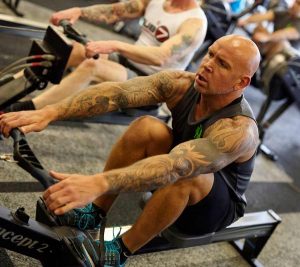
Weight Loss Tips
With any dieting culture, you need to be careful not to lose weight too fast, not eat enough calories or burn yourself out from working too hard. It’s understandable you want to see and feel a difference but going overboard can actually have opposite effects where you may end up needing a week or two to rest and recuperate. It’s important to be mindful of this within your workout and dieting process as your health comes first and foremost before losing weight. Now that we’ve covered the important elements, let’s look into some weight loss tips.
Eat small, regular meals
Not eating enough can actually freeze your metabolism. Many people don’t realise that not eating enough food or skipping meals can have counterproductive effects. This is due to the fact that not eating enough calories triggers your body to go into starvation mode, which is where the metabolism slows down in order to survive. The purpose of your metabolism is to keep you alive, so when it registers you are not eating, it stores the fat to preserve it for energy. Always ensure you are eating enough calories in order to healthily lose weight. It’s recommended you eat every 3-4 hours at least,and eat some form of protein every four hours or so. Protein helps to build muscle, which burns fat – in fact, muscle burns more than 5 times the number of calories than fat.
Challenge yourself with exercise
If you are beginning to workout or have changes in your exercise routine, it will more than likely be challenging initially. As your body adjusts, these exercises will become easier but this is where you should continue to push yourself. Eating and burning the same amount of calories will only maintain your current weight – it won’t help with weight loss. For this reason, push yourself with heavier weights, more workouts or ensure you feel some difficulty in most workouts. Those days when your body needs a rest and can only have light cardio are not included in this.
Calorie Deficit
In order to lose weight, you essentially need to be burning more calories than you consume. This is called a calorie deficit. You can still eat the same amount of food, if not more, except cut the amount of calories. Incorporating more nutrients dense food and reducing the carbohydrates, sugars and other fatty foods will do this. The easiest and safest way to do this is to get meal plans from a coach but an alternative is to find meals online which state the number of calories and download a calorie counting app if you want to put meals together yourself. It’s important to undertake research for this as you will need to be careful not to eat too few calories – this can have dangerous effects on your body. The plate method is something you should incorporate into your daily routine, whether you are doing a calorie deficit or not. This entails half a plate of vegetables, a quarter a plate of protein or meat and a quarter of carbs, and when incorporated in most of your meals makes for a nutritionally balanced diet.
Olivia Fairhurst is a content manager for Franklin Engineering, diesel engine reconditioners in Auckland NZ.
Also read: Long term fat loss is rare

